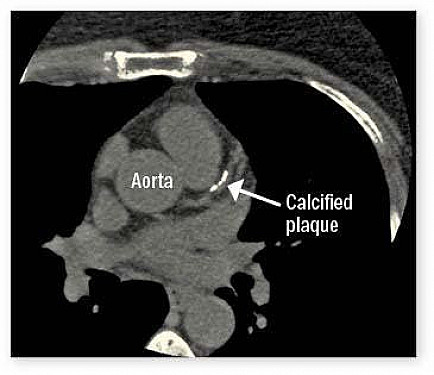How is PSA used to monitor prostate cancer?
The goal in treating prostate cancer that hasn't metastasized to other parts of the body is to eradicate the disease so it doesn't come back. What if a man's PSA rises after treatment?
- Reviewed by Marc B. Garnick, MD, Editor in Chief, Harvard Medical School Annual Report on Prostate Diseases; Editorial Advisory Board Member, Harvard Health Publishing

Editor's note: second of two parts; read part one here.
In the first part of our series, we described how PSA is used as a screening tool to help detect prostate cancer in men who don’t have symptoms. PSA screening can save lives, but it frequently finds slow-growing cancer that might not ever become deadly. Sometimes PSA rises for reasons unrelated to cancer, including inflammation in the prostate, or a benign enlargement of the gland that often occurs with age. There are longstanding concerns that PSA screening leads to unnecessary tests and overdiagnosis of prostate cancer.
Doctors also measure PSA to check for disease progression in men who have an established cancer diagnosis. But where PSA screening often yields ambiguous findings, using PSA to monitor cancer progression “is one of the most useful tools we have,” says Dr. Marc B. Garnick, the Gorman Brothers Professor of Medicine at Harvard Medical School and Beth Israel Deaconess Medical Center, and editor-in-chief of the Harvard Medical School Guide to Prostate Diseases.
Men on active surveillance for low-risk prostate cancer might need treatment if their PSA levels start to rise. Doctors also measure PSA to check for recurring cancer in men who were already treated with surgery or radiation. But use of the test in such cases differs in important ways
PSA elevations after surgery
PSA should be undetectable after a man has his prostate surgically removed. That’s because all PSA-releasing cells should have been taken out. If PSA rises during follow-up monitoring, then men have what is called a biochemical recurrence. This means that cancer cells still lurk somewhere in the body.
PSA elevations after radiation
Radiation treatments destroy cancer in the prostate, but leave the rest of the gland intact. Instead of falling to zero, PSA therefore drops toward what doctors call the nadir, which is the lowest level reached after radiation treatment. Ideally, the nadir will be less than 1 nanogram of PSA per milliliter of blood (ng/mL), or preferably less than 0.5 ng/mL. A biochemical recurrence in radiation-treated men is diagnosed if their PSA rises by at least 2 ng/mL over the nadir.
What happens next?
Doctors have traditionally looked for cancer after biochemical recurrence by giving men bone scans and computed tomography scans of the abdomen and pelvis. If the scans show no evidence of metastases, then men have what’s referred to as nonmetastatic prostate cancer. It’s called that because rising PSA reveals cancer that the traditional scans are unable to find.
If the PSA doubles every few years, then such patients can often be followed without need for specific treatments. But if the PSA levels double more rapidly, say every six to eight months, “then we get concerned,” Dr. Garnick says. This example illustrates how PSA kinetics —the rate of PSA change over time — can play a very important role in helping doctors determine if there’s a need for additional treatment.
Evolving treatment
More recently, doctors have begun using a different test to look for cancer in men with biochemical recurrence. The test scans for a protein called prostate-specific membrane antigen (PSMA) that most prostate cancer cells have on their surfaces. Doctors start by giving an intravenous tracer that travels the bloodstream, finding and sticking to PSMA. Specialized imaging techniques can zero in on the tagged cells, which glow like lit matches in a dark room. PSMA is valuable because it can detect tiny metastases that are still too small to see with traditional imaging methods.
Doctors measure PSA every three months or so to evaluate how well treatments for metastatic cancer are working. If the levels fall or stabilize, then the treatments are effective. It used to be that all men with metastatic prostate cancer got lifelong treatment, but therapies are steadily improving. Today, long-term treatments can be suspended — sometimes indefinitely — "if PSA remains consistently undetectable and the metastases are no longer visible,” Dr. Garnick says.
PSA is also crucial for evaluating experimental therapies for very advanced forms of prostate cancer. Such therapies can include new drugs or drug combinations that haven’t yet been approved by the FDA. “A significant drop in PSA of 50% or more is considered a positive indicator of treatment response,” Dr. Garnick says. “PSA monitoring continues to be one of the most important evaluations that physicians and clinicians can perform to determine the best treatments for men with prostate cancer.”
About the Author

C.W. Schmidt, Editor, Harvard Medical School Annual Report on Prostate Diseases
About the Reviewer

Marc B. Garnick, MD, Editor in Chief, Harvard Medical School Annual Report on Prostate Diseases; Editorial Advisory Board Member, Harvard Health Publishing
Disclaimer:
As a service to our readers, Harvard Health Publishing provides access to our library of archived content. Please note the date of last review or update on all articles.
No content on this site, regardless of date, should ever be used as a substitute for direct medical advice from your doctor or other qualified clinician.















